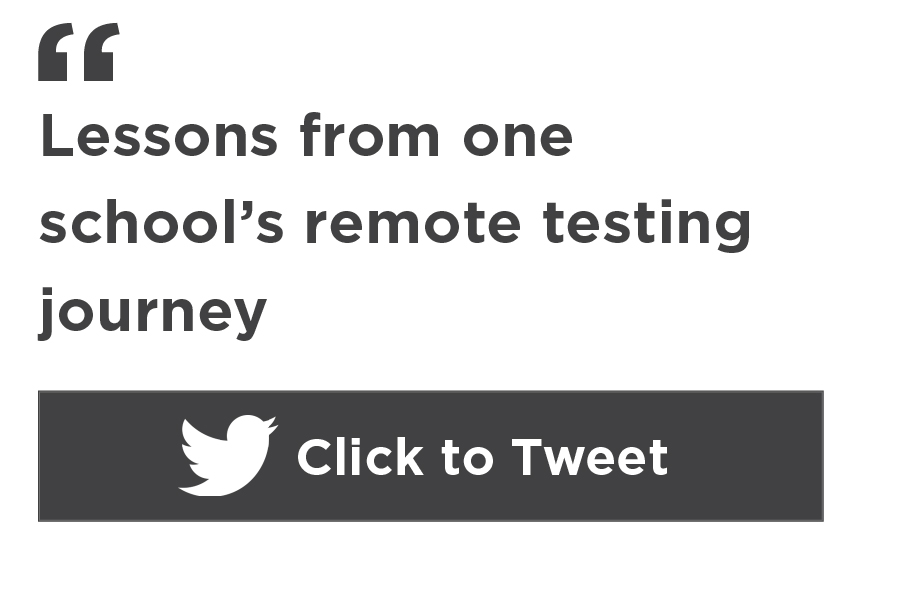When nothing is normal, everything is an experiment. And in this new world of COVID-19 school closures and distance learning, there has been a lot of experimenting.
Every experiment—whether it works or not—can lead to new learnings. In the last six months, educators, parents, and students alike have learned a lot through trial and error. As a new school year looms, those lessons learned can shape the next few months and lower the stress that comes with living in so much uncertainty. Sharing wisdom gained can go a long way, too.
OneSchool Global faced countless questions about remote learning—from how to test to how to keep students engaged—long before the pandemic hit. Serving more than 9,000 students in 20 countries, they offer a combination of in-person and online instruction. As they grew from one location to a connected network of over 125 campuses around the world, they worked through the hurdles that many schools are grappling with now. And while their journey isn’t over, OneSchool’s example points to the value of technology and how remote testing can support the individual needs of students even in such difficult times.
[W]atch Remote testing: Guidance for this fall and visit our remote testing site for everything you need for testing success.
Embracing the opportunities offered by remote learning and testing
One of OneSchool’s philosophies is “What we do for one, we do for all,” which translates into ongoing efforts to ensure equity in education. Technology in general—and remote learning in particular—has played a large part. Within the last decade, OneSchool Global has transitioned to a technology-enhanced learning environment to support their operating model of self-directed learning. This offers opportunities for students to shape their learning, leveraging subject offerings and skilled teachers beyond their local campus.
As OneSchool’s Sydney-based global communications manager Scott Christensen explains, “A student that’s studying at a very small campus in a rural location—that might have a total of 40 or 50 students—is getting the same experience as the students in a city-based campus, which has 400 or 500 students and a larger teacher profile.”
Since partnering with NWEA in 2017, OneSchool Global has relied on MAP® Growth™ data to support their students and philosophy. Within two weeks of each testing cycle, teachers, parents, and students meet for conversations about results to develop learning plans that can ensure continued growth. These plans give kids clear targets to aim for and the structure they need for effective self-directed learning.
This held true even with remote testing earlier this year, when coronavirus closed campuses from Auckland, New Zealand, to Alès, France. Remote testing also reaped one unexpected benefit: parent buy-in. OneSchool’s chief information and digital learning officer, Thomas Frizelle, PhD, explains in this short video.
Creating a culture of change
The familiarity with online tools and processes made it relatively easy for OneSchool to respond to the pandemic. In most cases, campuses didn’t lose a day of teaching when they moved to remote learning. As schools open up again, they are shifting back to some in-person learning, but they know things will be different.
“Not all kids can come back to school five days a week,” says Thomas. “For some campuses, a third of your kids could be on campus at any given time.” But OneSchool can face the future with confidence, knowing from their own experimentation that remote learning worked well, despite some challenges arising from closed campuses. This kind of continuous improvement aligns with OneSchool’s overall culture of innovation and experimentation.
“With the approach we take to education, if you reach the destination, you’ve probably taken the wrong journey,” says Scott. “The notion of the destination continually evolves. If we feel we’ve reached it, we’re pretty quickly looking for a new one that continues to stretch our thinking anyway.”
Trying it—then verifying it
OneSchool’s reliance on data has been a major part of their progress, and it’s all the more important in the aftermath of the school closures. Administrators plan to dive right in with remote testing when classes resume to see the impacts of going fully remote during the pandemic.
“I’m fascinated to get into the data and start asking some what-if or why questions,” says Thomas. “It’ll be interesting to see how we fared.”
Whatever the data reveals, OneSchool looks forward to using it to continue to drive conversations—and ongoing improvement—at the global, school, and student level. Learn more about how OneSchool counts on remote testing with MAP Growth in our case study. And if you’re an NWEA partner, watch Remote testing: Guidance for this fall and visit our remote testing site for everything you need for testing success.









